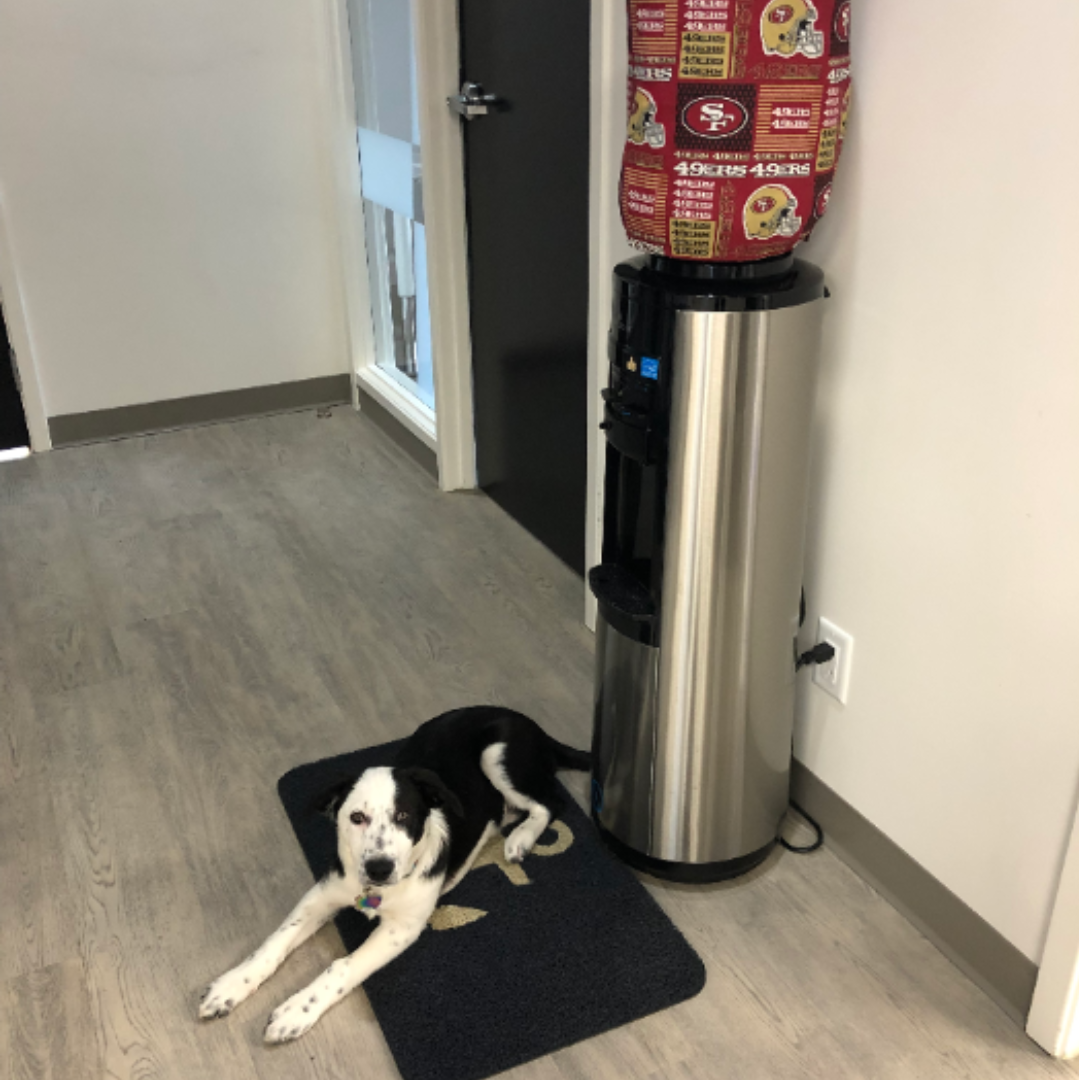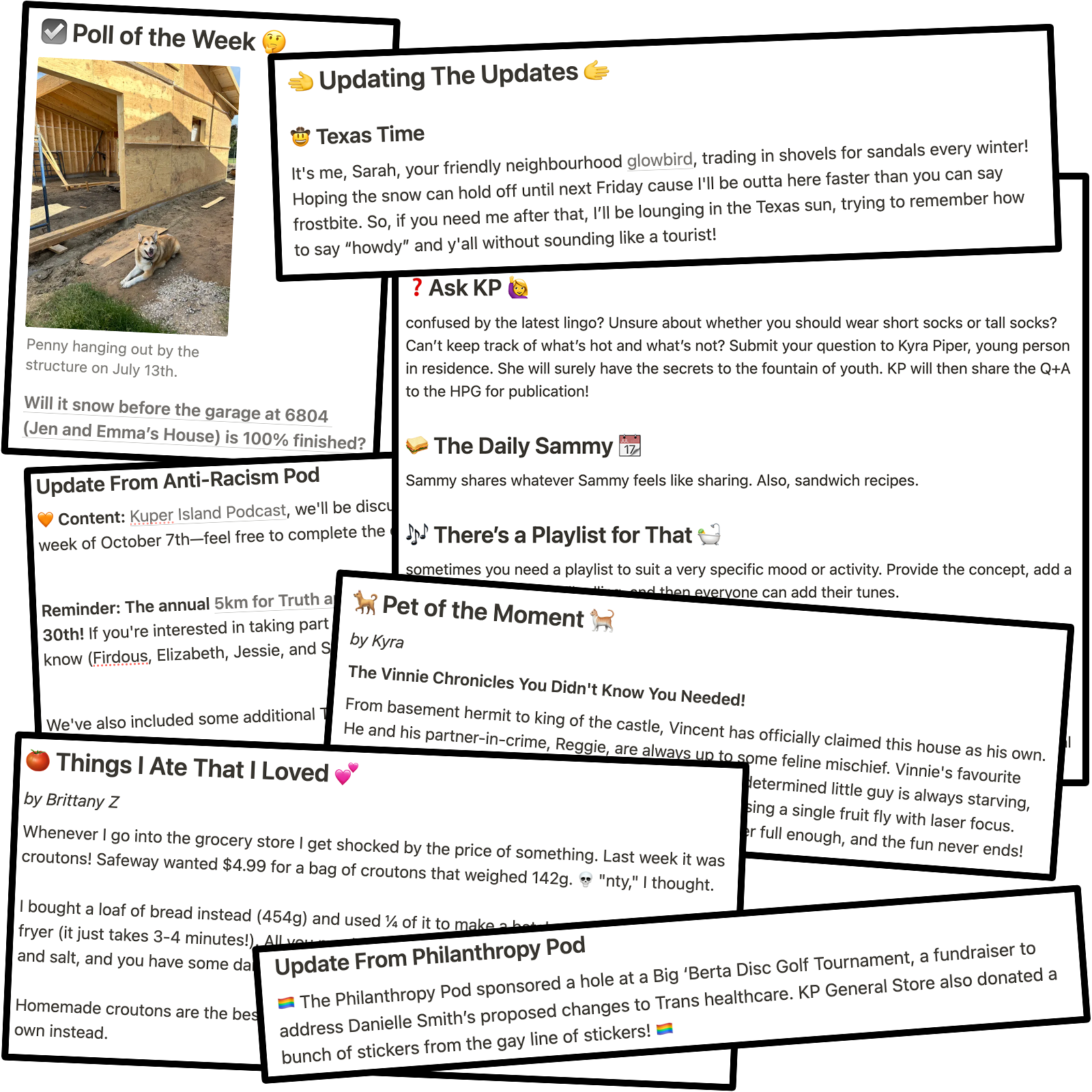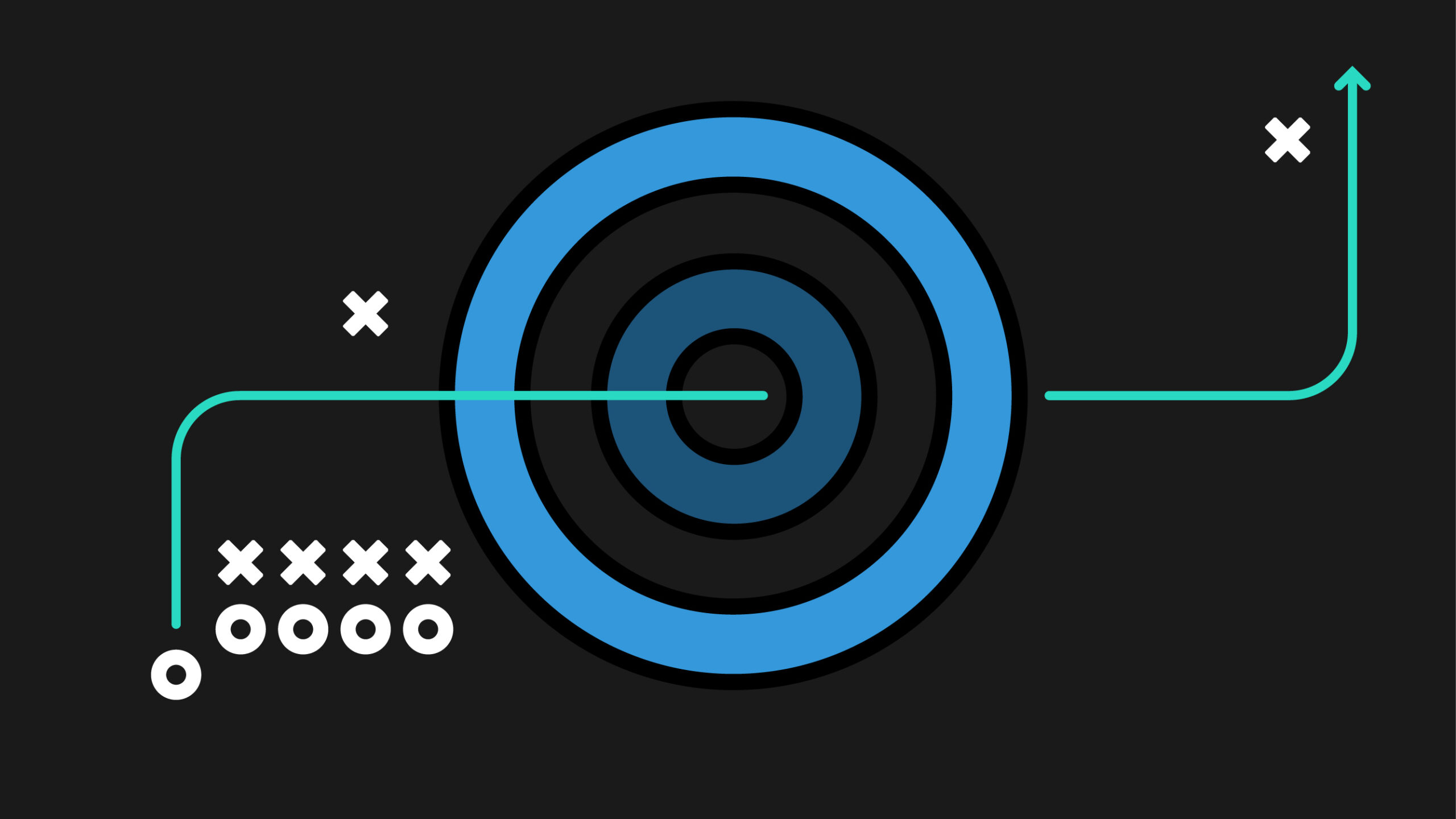Internal newsletters have a bad rap—they’re often seen as a waste of time because no one reads them. Why? Because they’re boring, formulaic, and seen as an inauthentic attempt to build corporate culture.
But it doesn’t have to be that way.
At their core, internal newsletters should be more than just a vehicle for company updates—they’re an opportunity to foster connection and improve communication in your team, both of which contribute to a healthier culture. When done with intention, they can become a valuable touchpoint that people actually look forward to reading (instead of instantly deleting).

This redditor didn’t see the benefit of an internal newsletter. It probably sucked.
How do you turn a stale corporate internal email into something better? Keep reading.
The impact of internal newsletters on remote team culture and success

If you’re going to create an internal newsletter, or revive and revamp your current newsletter, you want to know that it’s going to be worth the time and effort. It is!
We’re speaking from experience—at Kick Point we started our internal newsletter (The Hundy P Gazette 💯) in 2023. What initially was a one-person job summarizing Slack convos and work updates has evolved into a fun, engaging internal newsletter that everyone contributes to. Even more importantly, everyone reads it!
As The Hundy P Gazette evolved, we started to notice how our lil’ newsletter was making a big impact on our remote team. Here are the biggest wins you can expect from an effective internal newsletter:
Humanize the workplace
People aren’t robots, but sometimes that can be hard to remember when you only interact with someone from the other side of a screen. When we know our colleagues as a whole—their challenges, their victories, their lives beyond the workplace—we collaborate better and feel more invested in each other’s success.
By sharing stories in your internal newsletter, the digital workplace becomes more human. It helps teams see beyond job titles to the real people behind the work.
During a hectic workday, it can be easy to get caught up in frustrations or interpersonal hiccups. But when you know your coworkers better and have some rapport and trust built, it’s so much easier to assume positive intent. Imagine you get a request from a coworker that feels really direct and maybe a little blunt. Instead of immediately jumping to “Why is she being so rude to me? This isn’t my job!”, if we get to know the people we work with we might instead think “Oh, she’s probably feeling anxious about her upcoming vacation and is actually just looking for support!”
While an internal newsletter isn’t going to solve team relationships overnight (that’s a whole other huge topic), it serves as an important, regular touchpoint that helps people connect with colleagues they might not interact with on a regular basis. By making sure that your newsletter includes personal stories and opportunities for your team to share what matters to them outside of work, you help everyone feel seen as the human beings they are, and not just the role they fill at your company.
Promote a culture of connection
Remote work offers undeniable benefits (goodbye, commute!), but it also creates new challenges for maintaining strong team connections and company culture. With team members spread across different locations and time zones, the casual water cooler conversations, coffee runs, and lunch room chats that once knit our workplace culture together have largely disappeared.

Remote teams miss these organic touchpoints, so it’s important to be more intentional and have a structured approach to promoting workplace culture—an internal newsletter can be one of those touchpoints.
One of our goals with our internal newsletter is to help bring back some of those organic conversations and connections that we were missing. Here are some of the ways that The Hundy P Gazette contributes to our company culture:
- Creates a space to share cross-departmental and personal wins
- Gives visibility to projects and people that fly under the radar
- Captures and shares highlights from a very busy Slack so no one misses out
- Offers a space for people’s interests, hobbies, and personalities to shine
If you’re catching up on messages after a focus session, it’s easy to miss a funny or important conversation on Slack or Microsoft Teams. Internal newsletters can help highlight these moments, which helps people feel part of a team versus a bunch of individuals working in silos.
If you have a strong work culture and your team members are engaged, they’re more likely to be happy. If your team members are happy, you’re more likely to retain them.
Develop skills
Not everyone at Kick Point writes on a day-to-day basis. Some of us are busy coding, or diving deep into analytics. Giving non-writers the opportunity to write helps them find their voice and build confidence in their communication skills.
For people who write frequently, such as our SEO and ads teams, the newsletter offers a refreshing creative outlet free from the usual restraints (character limits, brand voice, and keywords!).
Regardless of your team’s composition—whether they’re seasoned writers or technical experts—contributing to an internal newsletter helps everyone develop new creative muscles and sharpen their storytelling abilities.
Beyond the written word, other skills can also be developed by contributing to a newsletter, such as:
- Knowledge sharing (translating technical concepts into accessible language)
- Storytelling
- Visual communication (screenshots, emojis, photos)
- Editing
- Collaboration
Some companies see work that doesn’t directly generate money as a waste of time, but that’s a very narrow, short-sighted way to think about collaboration like this. Teams that have a creative outlet for improving communication skills are stronger and will be better equipped to handle the inevitable stress and conflict that comes in any workplace.
Keep everyone in the loop
One key part of an internal newsletter is, of course, sharing important information: process changes, upcoming closures, reminders about employee benefit changes, etc. You know, the important but kinda boring stuff that no one really wants to read, but they do need to know.
When you have a newsletter that is 80% fun, your readers are more likely to stick around and read the informational/important stuff. If your newsletter is 100% informational, your engagement is going to suffer—no one wants to read a corporate memo.
So include those important informational items, but keep them straightforward and to the point. Having an “Important Updates” section can help. Use bullet points and link off to broader documentation if needed.
Want more tips on Agency Growth?
Ideas for your company’s internal newsletter

We’ve curated a list of fun and boring ideas to help your internal newsletter balance engagement with essential updates.
Fun ideas
Your newsletter needs personality! Including fun, engaging content will transform your employee newsletter from a corporate memo into something that people look forward to reading.
Here are some fun ideas to consider including in your employee newsletter:
- Brain teasers or puzzles (we like to create a Connections game)
- Recipe or restaurant recommendations
- Podcast/book/movie/TV show recommendations
- Spotify playlists or song recommendations
- Local business spotlight
- Featured pet(s)
- Fun stories (tales from vacation, celebrity encounters, the wildest thing that happened to you at work, etc.)
- Advice and inspirational quotes (this doesn’t have to be work-related!)
- Quick polls or surveys (these can be silly, or serious)
- Contests
- Memes
These ideas are just a starting point to get the wheels turning about what types of fun content can be featured in your company’s internal newsletter. Every team is different. The best content comes from your team’s passion and expertise.
You can also give enthusiastic team members their own newsletter column! For example, Liz, our resident Taylor Swift fan, keeps us in the loop with updates and fan theories, while Sammy recommends a sandwich every edition in her column, The Daily Sammy.
Boring ideas
An internal newsletter needs to be fun to draw people in, but it also needs to provide company news and updates so everyone is on the same page and aware of important changes.
Below are ideas for informational topics that you can include in your internal newsletter—just don’t only include these topics. (Otherwise it’ll be a snooze fest that no one will engage with!)
- Important changes/company updates (processes, policies, tools you use, etc.)
- Important dates (product or service launches, major client deadlines, holidays, etc.)
- Important industry news (new laws/regulations, market trends, shifts in consumer behavior, etc.)
- Meeting recaps
- Training and professional development opportunities
- Employee spotlights
- Employee work anniversaries or birthdays
- Client/customer success stories and wins
- Department highlights
- Upcoming events
- Tips and resources
- An update from the CEO
Make it easy for people to consume this type of content and be mindful of length. No one wants to read a two-page letter from the CEO, no matter how fun the rest of the newsletter was.
How to start an internal company newsletter

You’ve made it this far and you’re jazzed to start your team’s internal newsletter. Now what? It’s time to make it a reality.
Pick your tool
Our first edition of The Hundy P Gazette was in a Google Doc. We purposefully decided that it shouldn’t be “designed” or sent like a traditional newsletter.

We needed it to be easy for anyone to jump in and edit (not just the designers on our team) and we wanted it to feel casual. The nice thing about Google Docs is that you can leave comments directly on different sections. Our team naturally started adding funny responses, tagging each other and making jokes.
If you have a PDF newsletter, or even if you send an email newsletter, you really lose the feeling that this is an interactive and engaging touchpoint. It becomes just a one-way information push.
We use Notion for internal documentation, so it made sense to eventually move our newsletter there. It offered the same benefits as Google Docs but also did more:
- There is very little customization you can do in Notion, so everything looks good with minimal effort:
- It’s easy to make the newsletter skimmable with headings, callouts, quotes, and other formatting features.
- You don’t need to think about applying your brand or using the right typography, etc.
- You have freedom but not too much, so you don’t get caught up in designing and instead focus on the meat and potatoes.
- You also don’t need a template, you can just make a page and go.
- Since we have internal documentation in Notion, it’s easy to reference policy or process pages that already live there.
- It’s super easy to add images and videos (and for others to then download them, which Google Docs makes so hard for some reason…).
Notion not for you? There are so many awesome tools to choose from, like Canva or Figjam, which allow for layout flexibility and comments from team members—if you’re already paying for these services, it’s another way to utilize them!
Decide on frequency
How often you send out an internal newsletter will depend on how fast news moves at your company—and may depend on the size of your company too. We decided on a bi-weekly frequency. Weekly was too often for our team (we’d struggle to get enough content), and monthly was too long.
Doing something more often also makes it easier to do. If you’re creating a newsletter monthly or even quarterly, you’ll likely find it hard to get started, even if you have a process in place. A bi-weekly frequency helps build a routine—you’re less likely to procrastinate when the next edition is around the corner, but you still have breathing room and aren’t rushing to get the next newsletter out.
A higher frequency also makes it easier to remember company updates. A month is a long time. It’s much easier to reflect on what happened in the last week or two and add relevant company updates to the newsletter. (If something happened a month ago, it feels like old news!)
Based on all of the above, we believe that a two week cadence for internal newsletters is the sweet spot. It gives you enough time to gather meaningful content, is still timely, and is less overwhelming for your team.
You’ll also want to think about when your internal newsletter will get sent out. Do you send it out on Monday, so it’s something people can look forward to reading when they start their work week? Or do you schedule it on Friday, when work is winding down and people are more receptive to doing something that isn’t “urgent” or “mission critical”.
We schedule our internal newsletter for Thursday morning, which is the last day of the workweek for Kick Point (we work Monday-Thursday).
No matter what day you choose, the most important thing is to send it when your team is most likely to be paying attention—not during lunch when people are away from their desk, or when a recurring meeting typically happens.
Create a process
Without a clear workflow, internal projects die. If you’re a marketing agency like us, treat your internal newsletter like you would a client project. You’d create tasks, assign roles, and communicate clearly. A process keeps the information flowing, quality consistent, and your team engaged.
Here are questions to ask yourself, to help you create a process for your company’s internal newsletter:
- How are people going to submit?
- We recommend creating a dedicated email address so people can easily send submissions.
- What information do we need from submitters?
- This is where a guide can also be helpful! Not only can it include content ideas, but it can also include specific information needed for certain newsletter features (e.g. photos for an employee highlight, what details should be shared for an event, etc.).
- Don’t make too many rules for submissions though, you want to make it easy for people to submit!
- When will submissions be due?
- This could be one or two days before the newsletter goes out, depending on the workload of the person who’s creating it.
- How will we track and organize submissions?
- This could be as simple as filing the email submissions away into a folder so you know that it’s been included in the latest newsletter.
- What happens if we receive too much or too little content?
- If you have too much content, you can save some that isn’t timely for the next edition of the newsletter.
- If submissions are looking a little thin, get creative. Share interesting articles, mental health resources, or just fun recommendations like podcasts, TV shows, or food ideas. And if you’re really stuck? Ask ChatGPT silly questions.
- Who will create the internal newsletter?
- This will depend on how your company is structured. This could be HR, admin, or anyone.
- Also: who will be responsible for the internal newsletter when the lead is on vacation?
- Who will review the internal newsletter before it goes out?
- This could be leadership, or someone on the team who has an eye for detail and is good at catching typos.
- How is the team going to be notified about the latest edition?
- We use Slack—think about what works best for your team!
Remember that processes don’t have to be set in stone. You can always tweak it to fit your team’s needs!
Get buy-in
You’ve completed the steps above—now what? You need to get buy-in from not only leadership, but from employees too. Essentially you need to answer the question, “what’s in it for me?”
For leadership, you’ll want to touch on the benefits that we spoke about earlier in the post—humanizing the workplace, building culture, developing skills, and keeping everyone in the loop. Also discuss the resources (mostly time) that it’ll take to start doing this.
Once leadership signs off, it’s time to get buy-in from the whole team. Part of this includes highlighting that the internal newsletter isn’t just for boring corporate news, but for fun and engaging content as well. We did this by creating a guide for our team so they can see the type of content submissions we’re looking for. Setting up an easy submission process for content is another way you can increase submissions.
Being open and listening to feedback is also important. If people are asking the same question, it’s a sign that your process isn’t clear and can be improved.
What we’ve learned

Our newsletter has gone through a lot of changes since we first started it, and we’ve learned a lot along the way.
- Make it clear that contributing to the newsletter is a part of everyone’s role. If you don’t do this, it’ll feel optional. Kind of like the bystander effect—someone else will surely write content for the newsletter and I won’t have to, right?
- Create a guide for your internal newsletter. It should outline expectations (while it is a part of their job, it is not mandatory to submit every week), how to submit, and content ideas.
- Set up a reminder a few days before the newsletter goes out. We do this by setting up a simple Slack reminder that goes out to the whole team. (We get the most contributions when we remind people to contribute!)

- Make it easy to contribute! This could be sending in submissions via email, or a simple form. If it’s not easy, people won’t do it.
- Read it together as a group. This makes it more of a connection moment! We did this by creating a calendar event for when our internal newsletter releases. Since our newsletter is in Notion, everyone is in there at the same time commenting. If you don’t end up using Notion, you can create a channel in Slack for everyone to talk about it.
Start small and stay consistent! Your first editions won’t be perfect, but as your team sees their colleagues contributing, they’ll want to join in.
Our best editions are when lots of people contribute and the newsletter becomes the collective voice of our team. When people from every corner of your organization contribute their stories, recommendations, and updates, your internal newsletter changes from a one-way broadcast into a conversation.
If you want more content like this, be sure to subscribe to our newsletter as we’ll be writing more about Agency Growth in the future.
Steal our process
- Every team member at Kick Point is expected to contribute to The Hundy P Gazette. Some people submit three articles every edition, some less so.
- People are not required to submit an article for every single edition. If someone hasn’t contributed for a while, or the edition is looking thin, the editors will do some nudging.
- We created a list of article ideas for inspiration. People can choose to use the ideas or go rogue. While The Hundy P Gazette is mostly made up of non-work-related content, we also use it for client updates and important upcoming dates and events.
- We set up an email address for people to send their submissions to. With the help of Zapier and some magic, the submissions end up in a Slack channel for the editors.
- Every Monday of a newsletter week we send out a reminder in Slack to get those submissions in.
- We assign three editors to put all the submissions together and contribute as well.
- Every two weeks, we duplicate the most recent edition, update the edition number and date, and clear any content that isn’t timely.
- Our newsletter is published biweekly on Thursdays. We have a calendar event for the team that blocks 15 minutes of time at 10 am on newsletter days. We post a link in Slack, and everyone reads, comments, and feels smug about how clever we all are.
Creating an internal newsletter that doesn’t just collect digital dust in people’s inboxes might feel like a big ask, but it’s totally doable. Focus on making it fun, relatable, and genuinely useful—something people actually look forward to reading. Start small, stay consistent, and let your team’s personality shine through. You’ll know you’ve nailed it when people are chatting about it in Slack, sharing their favorite parts, and dropping jokes in the comments.




